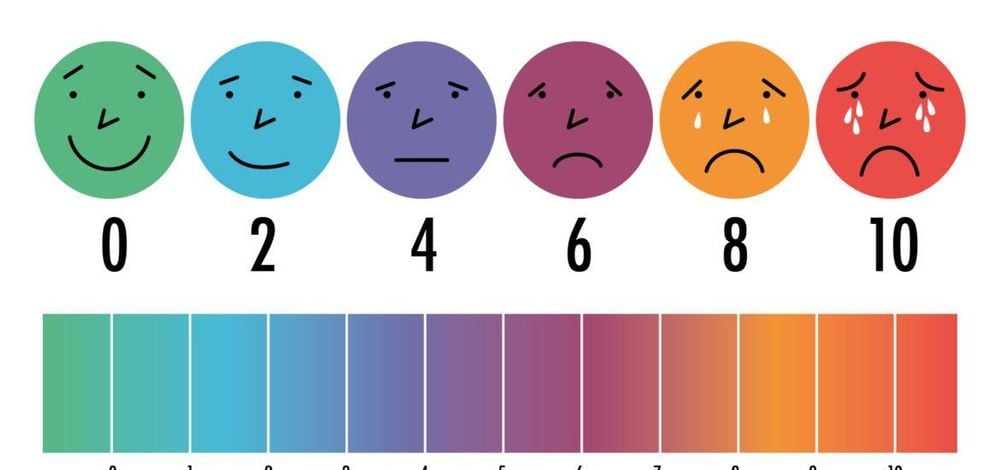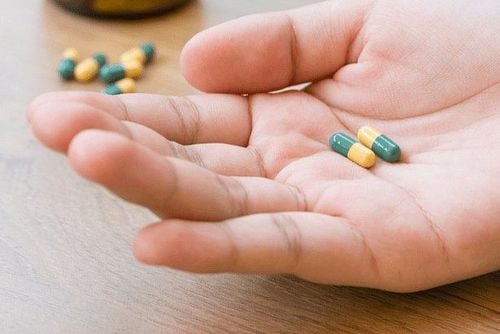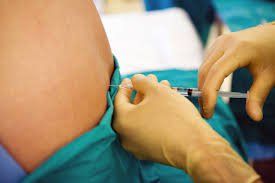This is an automatically translated article.
The article was consulted with Specialist Doctor I Nguyen Duc Thong - Anesthesiologist - General Surgery Department - Vinmec Danang International General Hospital.Feeling pain after surgery is always one of the worries of any patient. Today, with the development of modern medicine, there are many effective methods to help treat pain after surgery to help patients reduce pain and recover faster.
1. What is postoperative pain?
Postoperative pain is pain caused by surgical intervention and usually occurs after surgery. Depending on the nature and extent of surgery, the technique of the medical team and the patient's tolerance, the level of postoperative pain may vary from person to person.Usually, surgeries using laparoscopic methods are less painful and even painless. In severe and complicated surgeries, it can cause continuous pain after surgery, which can cause chronic pain that lasts many years after surgery.
Besides, the degree of postoperative pain also depends on a number of factors as follows:
Surgical location: The level of postoperative pain gradually decreases in each of the following locations: Thoracic and upper abdominal surgery, lower abdominal surgery , peripheral surgery and superficial surgery. The duration of pain of each joint site is different, namely thoracic surgery (4 days), upper abdominal surgery (3 days), lower abdominal surgery (2 days), superficial surgery and surgery peripheral (1 day). Each patient subject: According to research, about 15% of patients have little or no pain, 15% of patients have a lot of pain, and post-operative pain treatments are less effective.
2. Methods of assessing pain level after surgery
2.1 EVA Ruler
EVA stands for Echelle Visuelle Analogue, is a 10cm long ruler with 2 sides (with numbers and without numbers) and sealed at both ends.On the side with no number, the two ends of the ruler are marked "no pain" and "unbearable pain", respectively. Similarly, the other side will be numbered graduated from 0 to 100, where 0 represents "no pain" and 100 represents "unbearable pain".
On the ruler there will be a movable pointer that can indicate the level of pain that the patient is feeling. Usually, patients will be prescribed analgesia after surgery if the measured value on the EVA scale is 30 or more.

2.2 Score scale
In the range from 0 to 100 (increasing pain) the patient chooses a number corresponding to the level of pain he feels.2.3 Scale scale
In this method, the scale will be divided into 4 increasing levels, specifically:Level 0: No pain Level 1: Little pain Level 2: Moderate pain Level 3: Severe pain
3. The role of pain treatment after surgery
Post-operative pain treatment brings many benefits to the patient such as:Helping the patient to feel comfortable physically and mentally Bringing humanitarian meaning Helps balance the patient's psycho-physiological state after surgery surgery Support more effective treatment: Promote wound healing, reduce the risk of wound superinfection, reduce the risk of embolism, mobilize earlier and shorten hospital stay Help patients recover quickly recover and be able to take care of themselves. Helping patients to be able to practice rehabilitation early to reduce the risk of progression to chronic pain.

4. Post-operative pain treatment methods
The selected postoperative pain treatment methods may vary depending on many factors such as pain location, pain level, patient history,...Some common methods of postoperative pain treatment are:
Oral drugs: For patients to use post-operative pain relievers that do not belong to the morphine family. Treatment of postoperative pain with oral medications is often applied to patients who report back the same day. Patients can take paracetamol or non-steroidal anti-inflammatory drugs (NSAIDs) or a combination of both. However, the use of NSAIDs has some contraindications in cardiovascular patients, patients with stomach ulcers... Therefore, it is necessary to follow the instructions of the doctor. Oral drugs: For the subcutaneous route, drugs of the morphine family are used, and for intravenous routes, non-morphine pain relievers such as NSAIDs or paracetamol are used. Intramuscular injection should not be given because it can cause hematoma due to anticoagulation after surgery. Morphin injection under the skin or intravenously: often have many side effects such as: itching, nausea, vomiting, urinary retention.. Currently, at Vinmec facilities, Morphin is not applied to relieve pain after surgery. Epidural Catheter Injection: This postoperative pain management method is more effective in reducing pain than intravenous or subcutaneous administration. Using low-concentration anesthetics such as Anaropin 0.08% combined with Fentanyl 1-2 mcg/mL infused continuously through an electric syringe, can be adjusted according to the patient's pain level and lasts for 72 hours. Catheter to numb the nerve plexus: This method is usually applied in the extremities. Patients received repeated or continuous injection catheters to prolong postoperative analgesia. Injecting drugs into the joint socket: Used in arthroscopic shoulder or knee surgery. The drug is usually given at the end of surgery after the fluid has been aspirated. Anal medicine: Follow the medicine and dosage prescribed by the doctor. For example Efferalgan, Voltaren. Nowadays, multimodal pain management is often applied (applying 2 or more pain relief methods) to better control postoperative pain, help patients recover quickly after surgery and increase satisfaction.
At Vinmec International General Hospital, pain management is one of the top priorities: being a pioneer in pain management without using Morphin (Morphin free) to avoid side effects. Morphine by-products. We employ most techniques of regional anesthesia with a single shot or continuous NB controlled infusion (PCA) catheterization. Pain-relieving treatment is not only applied during cesarean section but also during childbirth (Painless delivery). Regional anesthetic techniques have been widely applied at Vinmec, bringing good analgesia such as: Elevation plane (ESP) anesthesia to relieve pain during open-heart surgery, lumbar squamous muscle block (QL block) to relieve pain. after abdominal surgery, cesarean section, pudendal nerve anesthesia to relieve pain from hemorrhoid surgery and after episiotomy, continuous epidural anesthesia with automatic drug pump combined with self-controlled NB (PIEB + PCEA) to relieve pain during vaginal birth; All neurosurgery techniques are performed by experienced anesthesiologists under the guidance of ultrasound and nerve detectors: brachial plexus anesthesia for shoulder joint surgery, clavicle surgery and limb surgery. upper, femoral nerve, sitting nerve, saphenous, lumbosacral, periarticular (PENG technique) for hip and lower extremity surgeries; paravertebral nerve and vertebral plane numbness in thoracic surgery, mastectomy; caudal anesthesia for surgery in children (femoral hernia, inguinal hernia, undescended testicle, spermatic cord cyst...)
In particular, at Vinmec Hospital, priority is always given to laparoscopic techniques, surgery by laparoscopic surgery. The robot is less invasive, the incision is small, and there is little tissue damage to help patients have less pain and recover faster after surgery. In addition, Vinmec also uses the most advanced electric knives such as ultrasonic knives, ligasua knives to help limit tissue damage and reduce postoperative pain.
Vinmec International General Hospital now has pain control units, providing regional anesthetic techniques combined with analgesics to ensure no pain after surgery, enhancing postoperative recovery to facilitate the patient. Patients can reduce pain after surgery, and recover health as quickly as possible.
Please dial HOTLINE for more information or register for an appointment HERE. Download MyVinmec app to make appointments faster and to manage your bookings easily.














